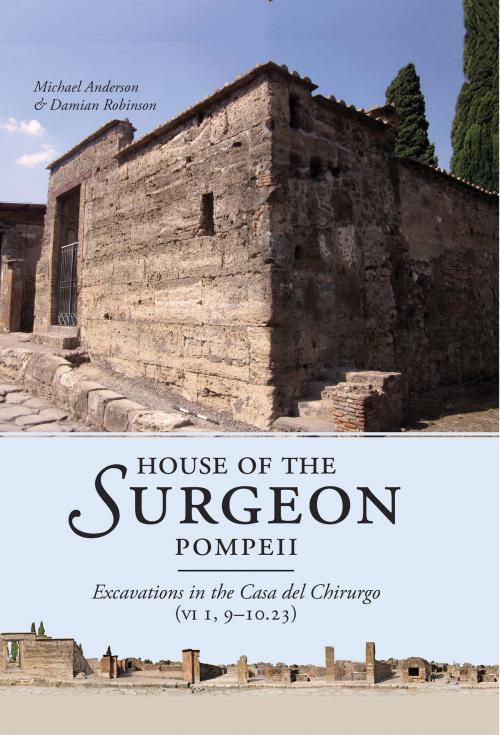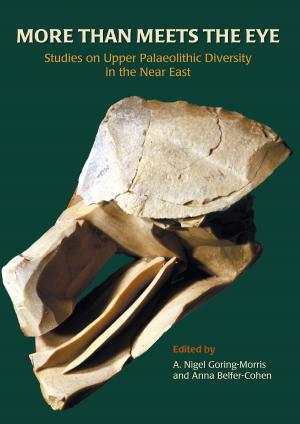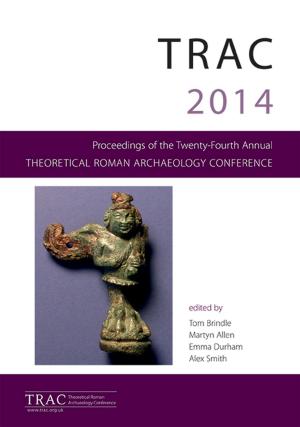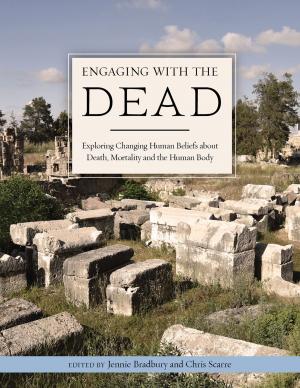House of the Surgeon, Pompeii
Excavations in the Casa del Chirurgo (VI 1, 9-10.23)
Nonfiction, Social & Cultural Studies, Social Science, Archaeology, History, Ancient History, Rome, Art & Architecture, Art History| Author: | ISBN: | 9781785707292 | |
| Publisher: | Oxbow Books | Publication: | November 30, 2017 |
| Imprint: | Oxbow Books | Language: | English |
| Author: | |
| ISBN: | 9781785707292 |
| Publisher: | Oxbow Books |
| Publication: | November 30, 2017 |
| Imprint: | Oxbow Books |
| Language: | English |
The House of the Surgeon represents the first major publication of an important series of excavations undertaken by the Anglo-American Project in Pompeii (1994-2006) at the ancient city of Pompeii in a city block known as Insula VI 1. This is one of the largest, most comprehensive, and most important sub-surface, pre-79 AD excavations ever to have been undertaken at Pompeii. The methodology employed to the systematic examination of an entire city block, involving extensive artefact and ecofact recovery, using the latest scientific methods, has generated one of the single largest bodies of archaeological data ever produced on the development of ancient Pompeii, from the earliest traces of human habitation until its destruction. The first major section of this data is now made available in form of a study of the most famous and prominent of the houses on the block. The Casa del Chirurgo (House of the Surgeon) has been one of the most frequently cited houses in the ancient city since its discovery in 1771. The results of the exhaustive study of the house within its urban context not only challenge many of the conclusions of previous research, but also make it possible at last for this important property to contribute information to the full history of Pompeii’s urban development, illuminating the chronology of urban change, the processes involved in ancient domestic construction, aspects of the ancient environment, and changing socio-political and economic conditions within Italy throughout the middle to late Republic and early Empire.
The House of the Surgeon represents the first major publication of an important series of excavations undertaken by the Anglo-American Project in Pompeii (1994-2006) at Pompeii in a city block known as Insula VI 1. This is one of the largest, most comprehensive, and most important sub-surface, pre-79 AD excavations ever to have been undertaken at Pompeii. The methodology employed has generated one of the single largest bodies of archaeological data ever produced on the development of ancient Pompeii, from the earliest traces of human habitation until its destruction. The first major section of this data is now made available in form of a study of the most famous and prominent of the houses on the block. The results of the exhaustive study of the Casa del Chirurgo (House of the Surgeon) within its urban context not only challenge many of the conclusions of previous research, but also make it possible to contribute information to the history of Pompeii’s urban development, illuminating the chronology of urban change, the processes involved in domestic construction, aspects of the environment, and changing socio-political and economic conditions within Italy throughout the middle to late Republic and early Empire.
The House of the Surgeon represents the first major publication of an important series of excavations undertaken by the Anglo-American Project in Pompeii (1994-2006) at the ancient city of Pompeii in a city block known as Insula VI 1. This is one of the largest, most comprehensive, and most important sub-surface, pre-79 AD excavations ever to have been undertaken at Pompeii. The methodology employed to the systematic examination of an entire city block, involving extensive artefact and ecofact recovery, using the latest scientific methods, has generated one of the single largest bodies of archaeological data ever produced on the development of ancient Pompeii, from the earliest traces of human habitation until its destruction. The first major section of this data is now made available in form of a study of the most famous and prominent of the houses on the block. The Casa del Chirurgo (House of the Surgeon) has been one of the most frequently cited houses in the ancient city since its discovery in 1771. The results of the exhaustive study of the house within its urban context not only challenge many of the conclusions of previous research, but also make it possible at last for this important property to contribute information to the full history of Pompeii’s urban development, illuminating the chronology of urban change, the processes involved in ancient domestic construction, aspects of the ancient environment, and changing socio-political and economic conditions within Italy throughout the middle to late Republic and early Empire.
The House of the Surgeon represents the first major publication of an important series of excavations undertaken by the Anglo-American Project in Pompeii (1994-2006) at Pompeii in a city block known as Insula VI 1. This is one of the largest, most comprehensive, and most important sub-surface, pre-79 AD excavations ever to have been undertaken at Pompeii. The methodology employed has generated one of the single largest bodies of archaeological data ever produced on the development of ancient Pompeii, from the earliest traces of human habitation until its destruction. The first major section of this data is now made available in form of a study of the most famous and prominent of the houses on the block. The results of the exhaustive study of the Casa del Chirurgo (House of the Surgeon) within its urban context not only challenge many of the conclusions of previous research, but also make it possible to contribute information to the history of Pompeii’s urban development, illuminating the chronology of urban change, the processes involved in domestic construction, aspects of the environment, and changing socio-political and economic conditions within Italy throughout the middle to late Republic and early Empire.















